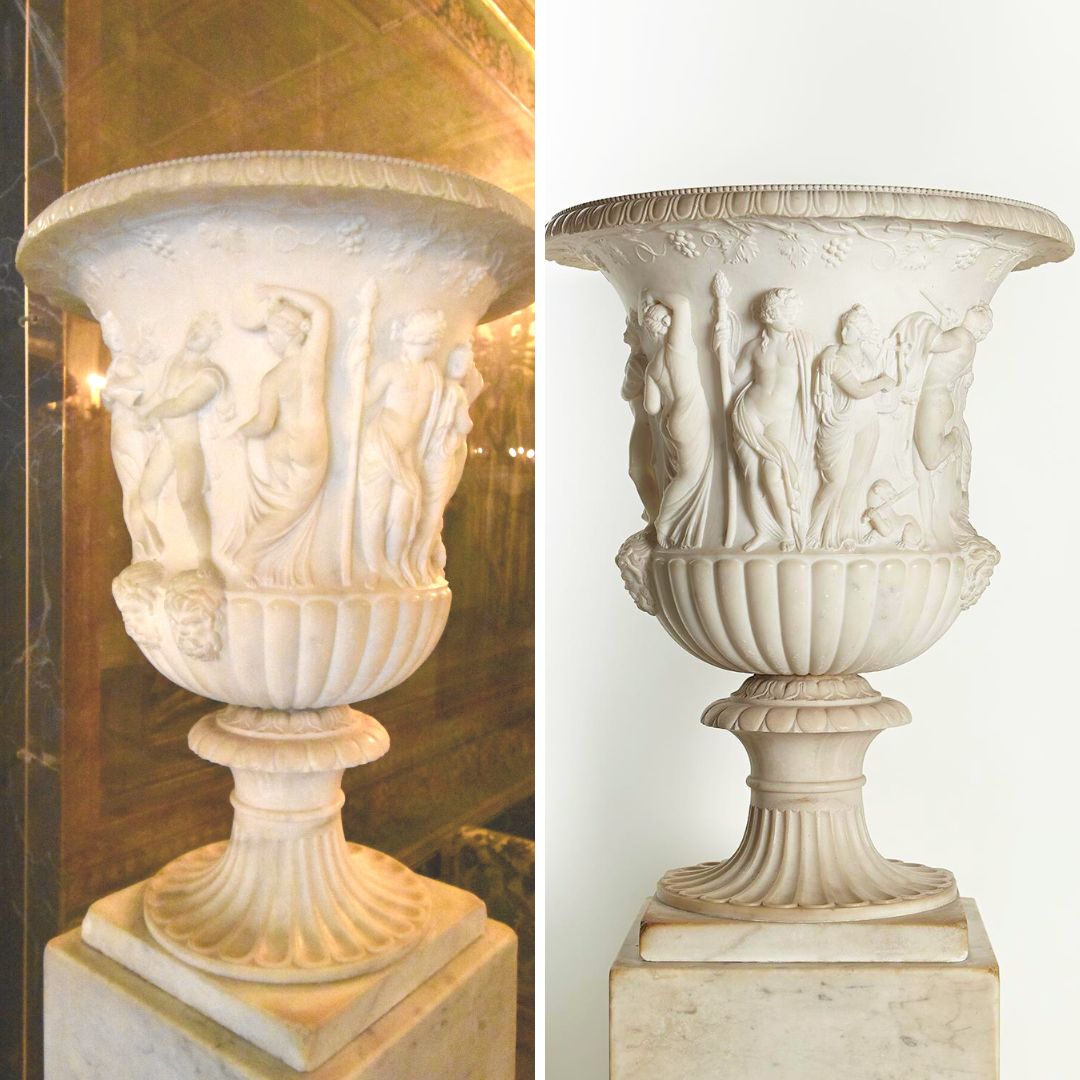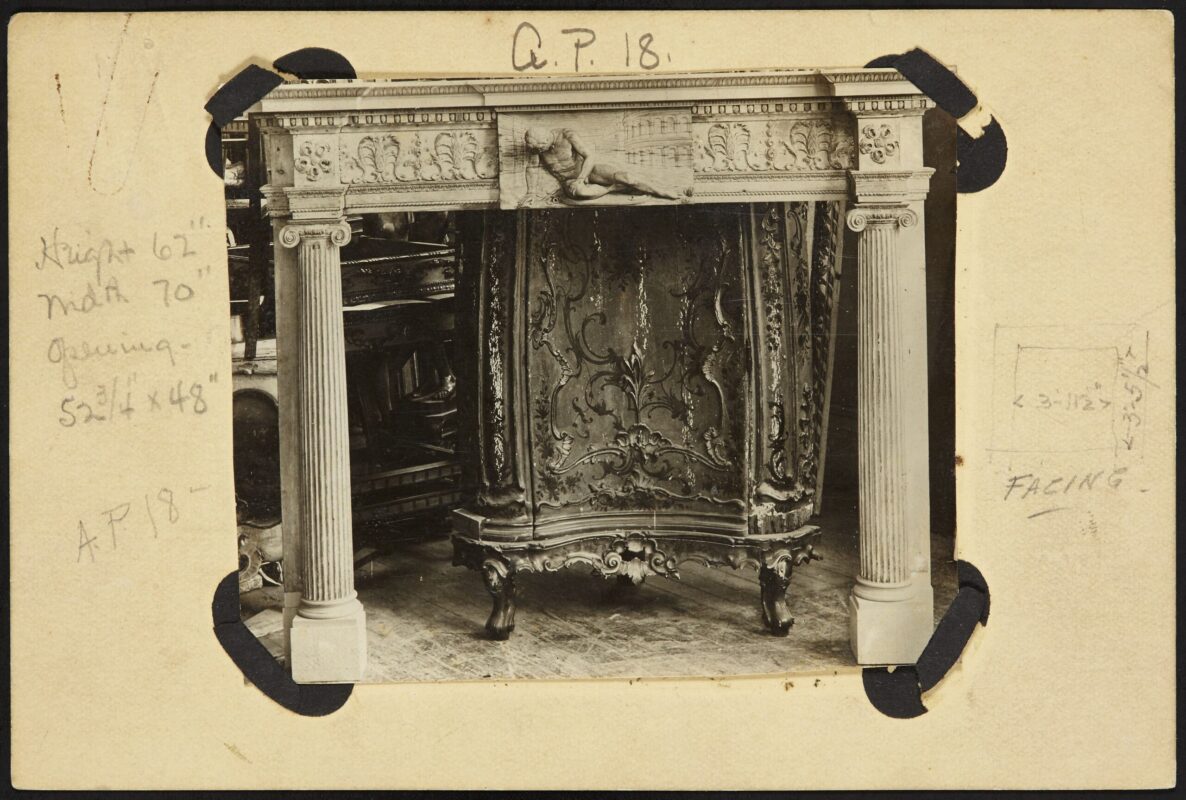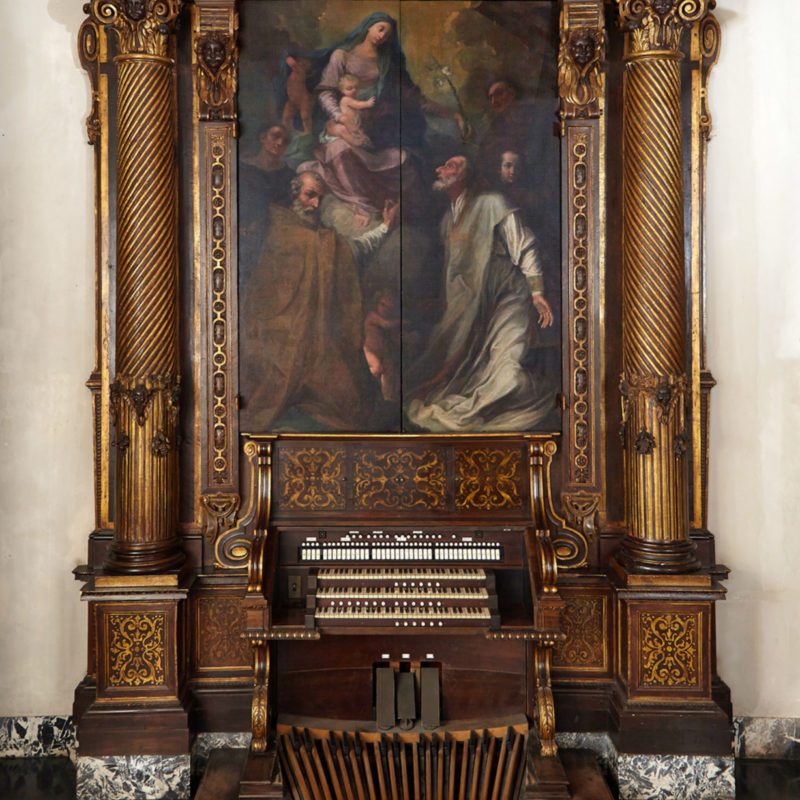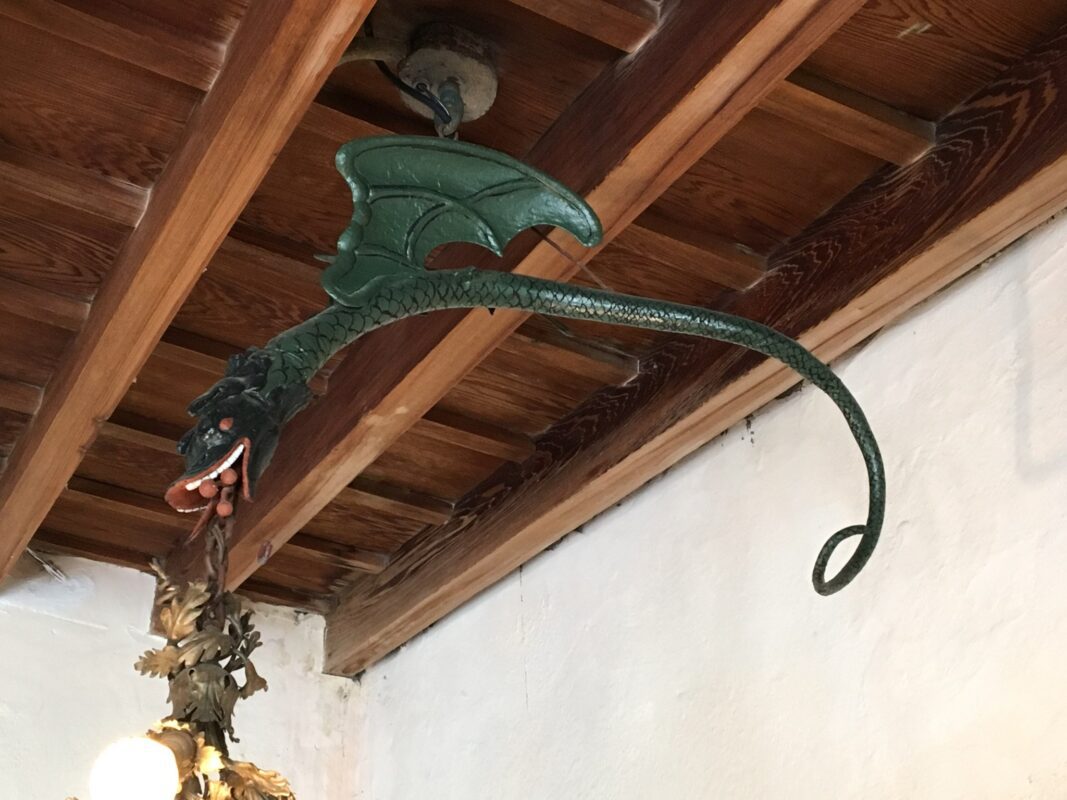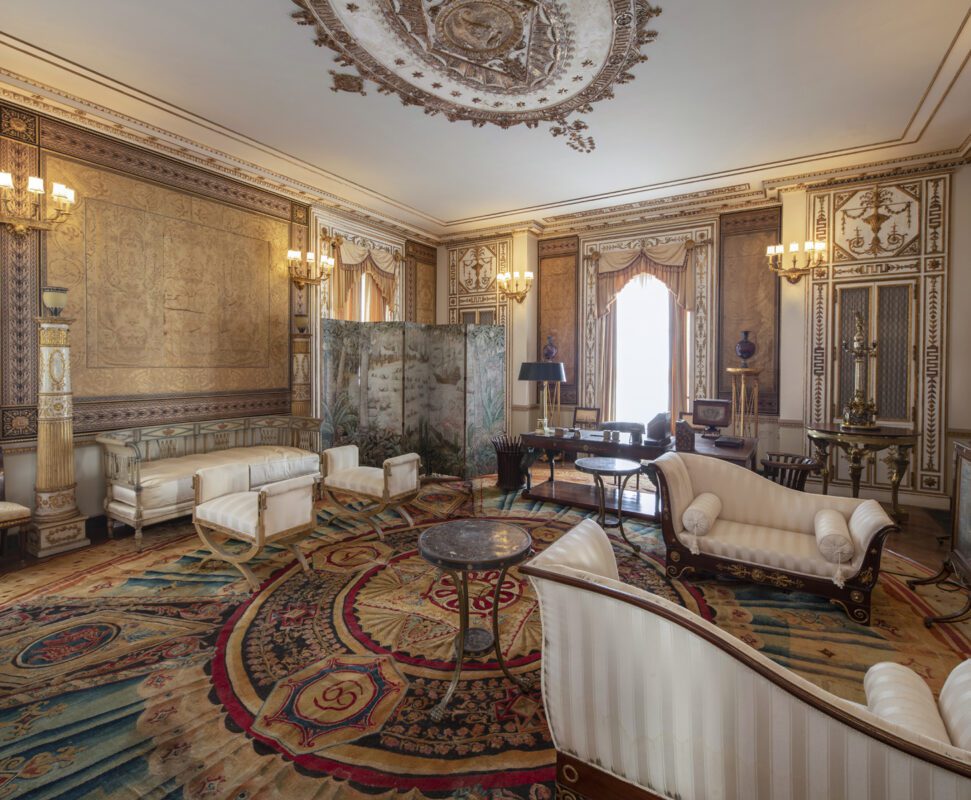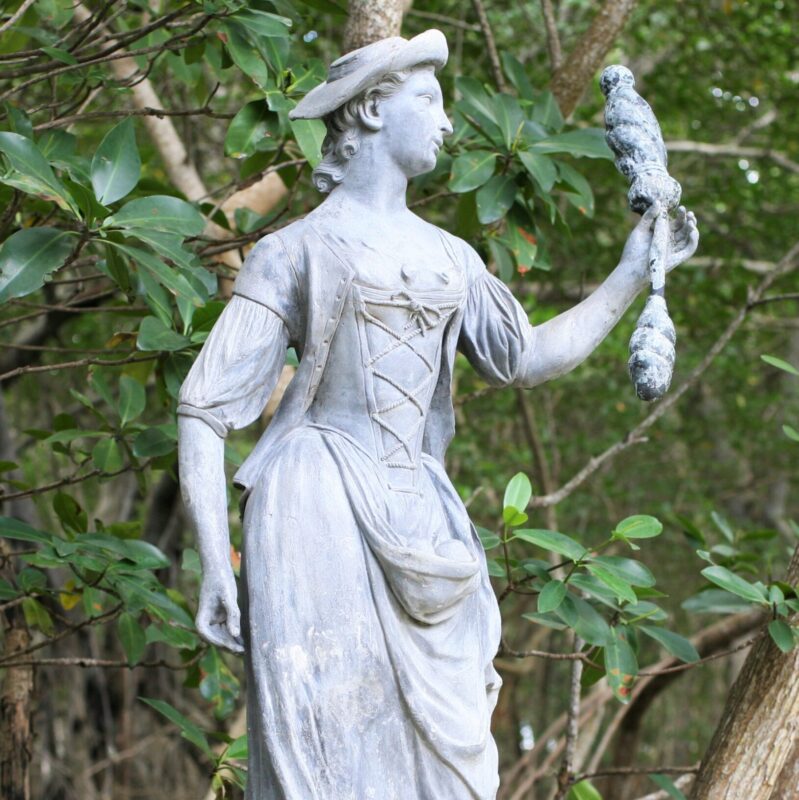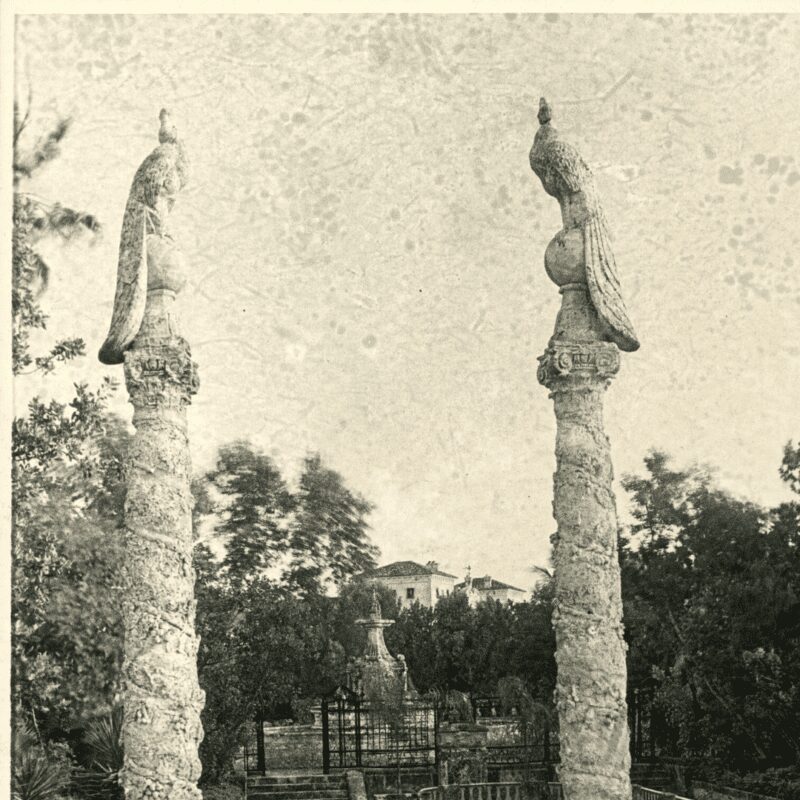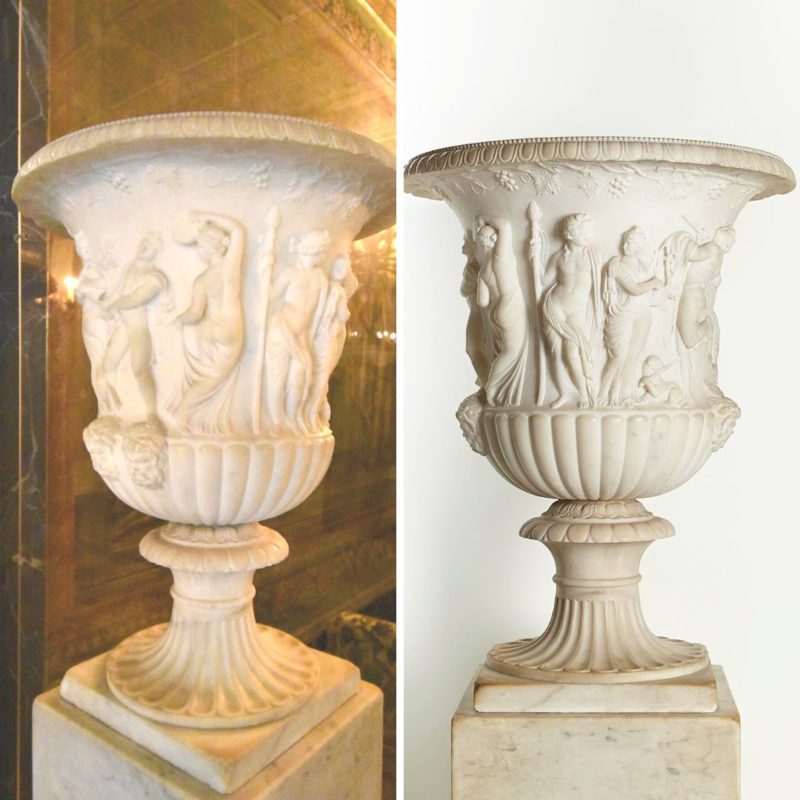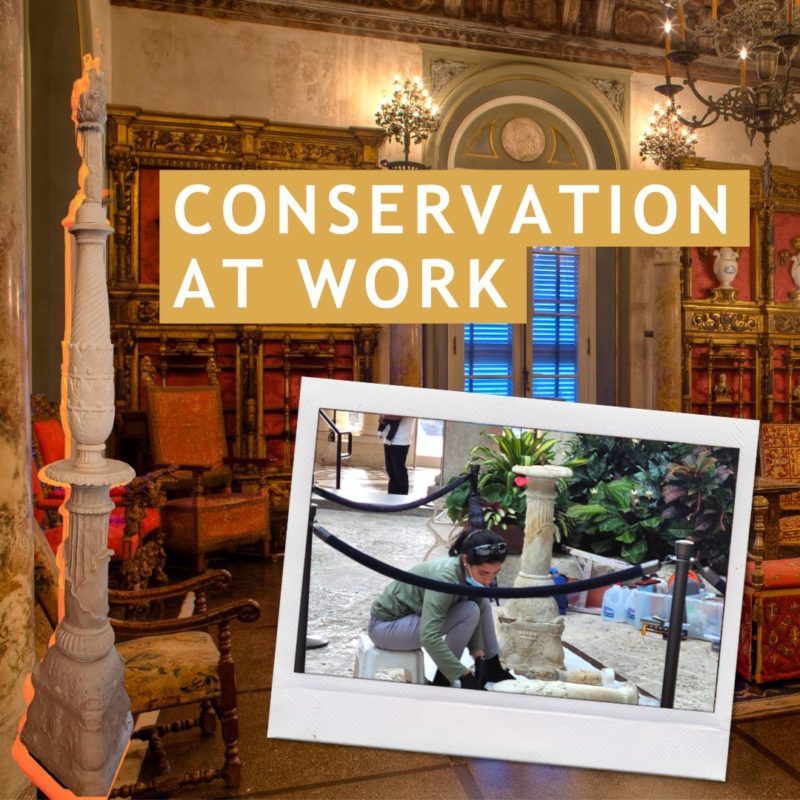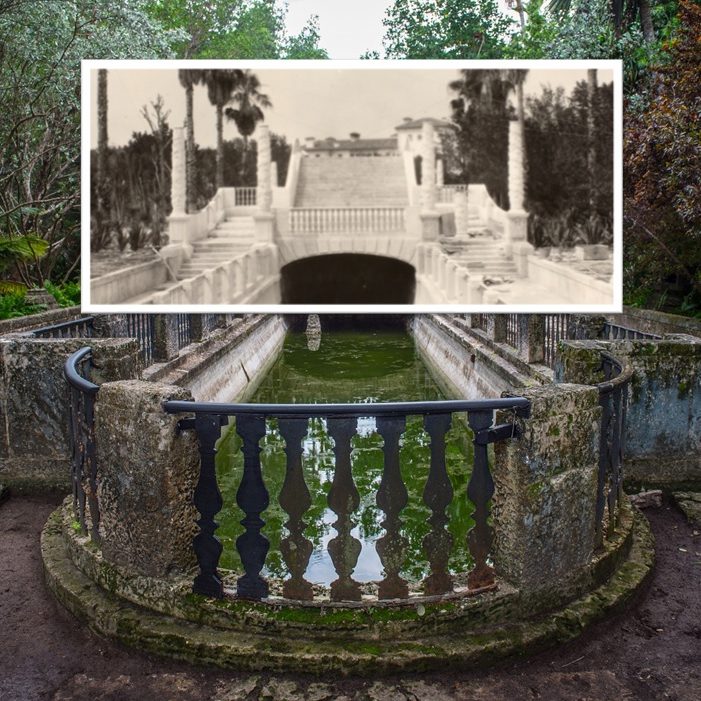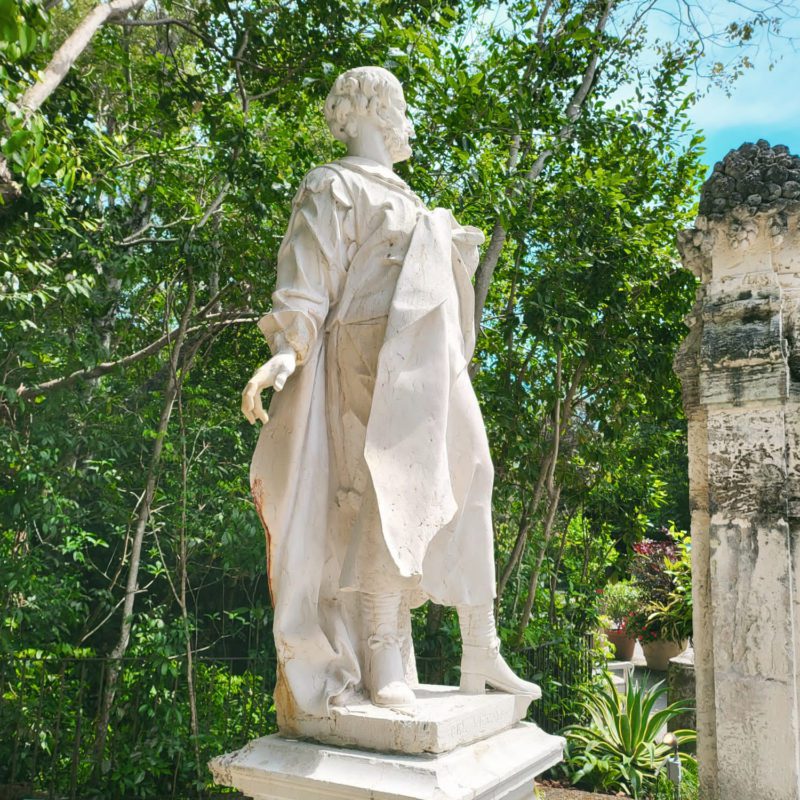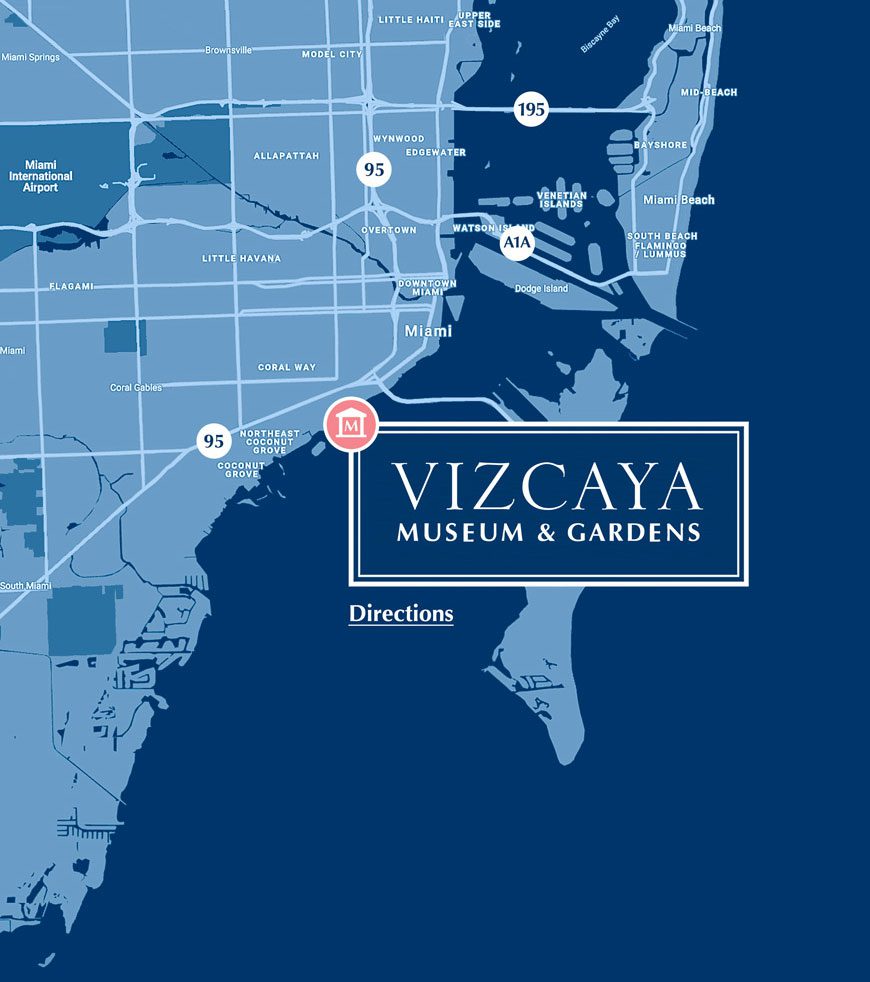Every year, Vizcaya receives thousands of visitors who are intrigued by the array of historical décor and objects of centuries past. Upon entering the Entrance Hall, they are greeted by a pair of ornamental vases that Vizcaya’s patron, James Deering (1859-1925), acquired in July of 1916.
Both marble objects are modeled after celebrated antique vases that were named after the powerful, noble Italian families that owned them: the Borghese and the Medici.
The Borghese Vase
The Borghese Vase was found in the gardens of Sallust in 1566 and acquired by the Borghese family. The monumental marble object, weighing over 2,400 lbs., remained in the family until 1807, when the Emperor of France, Napoleon Bonaparte, bought it. It was later moved to the galleries of the Louvre Museum in Paris, where it remains on display today.
Like the original, Vizcaya’s smaller copy features a relief sculpture (raised carving) depicting a procession in honor of Bacchus, the Roman god of wine and hospitality. Bacchus is represented with a string of figures dancing to the tunes of a piper. This drunken gathering, referred to as bacchanalian, is echoed under the lip, or edge, of the vase with delicately carved grapevine leaves.
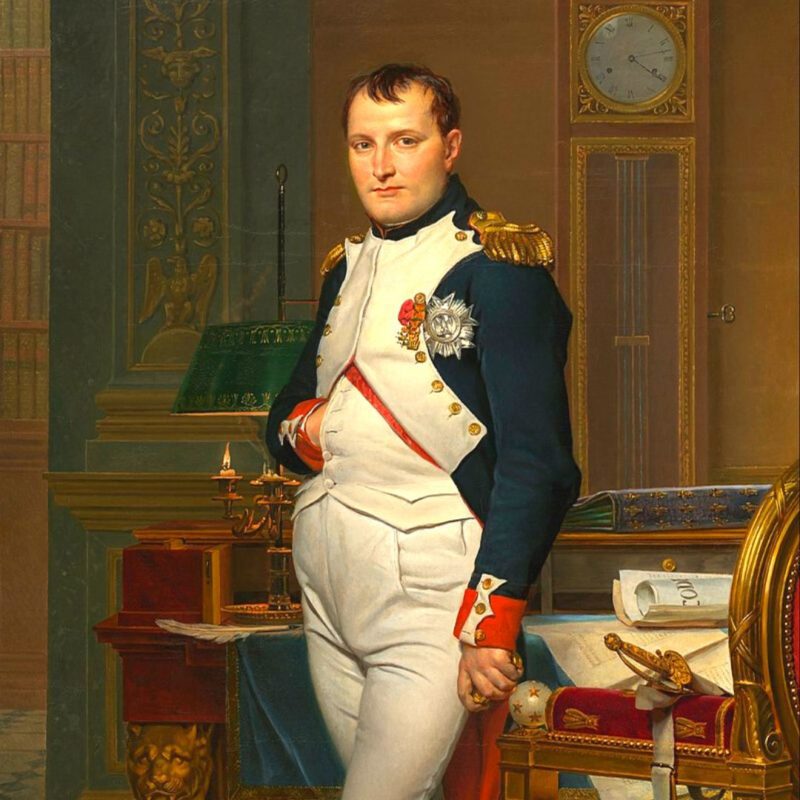

The Medici Vase
The companion piece to Vizcaya’s Borghese Vase is a copy of the Medici Vase. The original was recorded in the inventory of the Villa Medici, in Rome, and transferred in the later 1700s to the Uffizi Gallery in Florence, where it is still prominently displayed.
This vase is characterized by two fluted handles that rise from the heads of satyrs, mythological part-human, part-beast creatures. Its frieze, or carved horizontal band, illustrates an early episode in the story of the Trojan War: the sacrifice of Iphigenia.
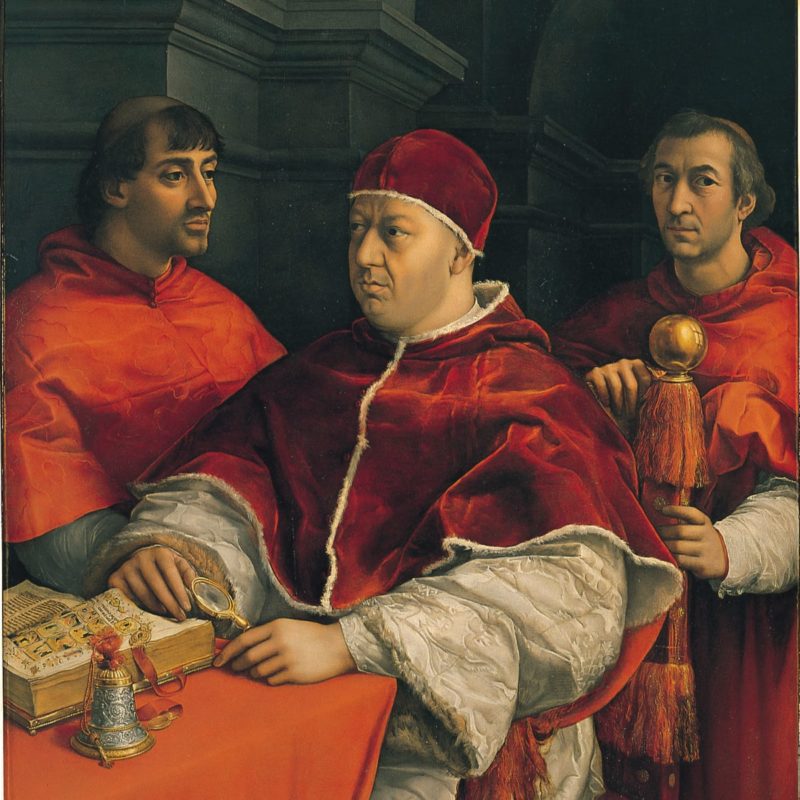
Building a Collection
These massive vessels originally served as garden ornaments and were admired by artists and collectors alike. They were reproduced as pairs in a variety of materials, such as bronze, jasperware, or marble. Smaller copies, like the ones at Vizcaya, were collected by English noblemen on the Grand Tour, the educational trip through Europe popularized the 1700s. The vases became signifiers of a collector’s worldliness and appreciation for ancient cultures.
Two hundred years later, Deering also found inspiration in Italian culture and was able to furnish his home with these marble vases, imbued with the myths of ancient Rome. They were placed inside Vizcaya’s Entrance Hall, surrounded by other mythological narratives featured in the wallpaper, appropriately named La Galerie Mythologique (The Gallery of Mythology) by its French manufacturer Joseph Dufour (1752-1827). With this arrangement, Deering’s artistic director, Paul Chalfin (1874-1959), created an homage to the revival of classical antiquity that continues to awe Vizcaya’s visitors.
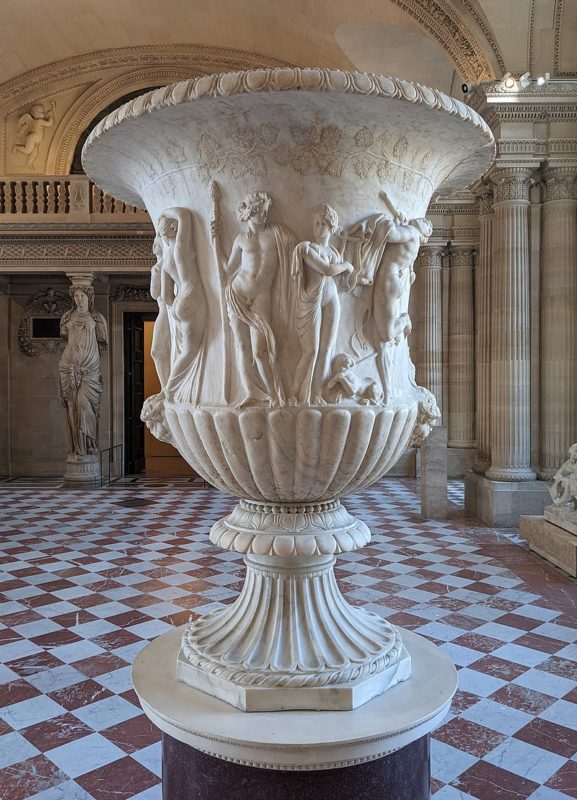
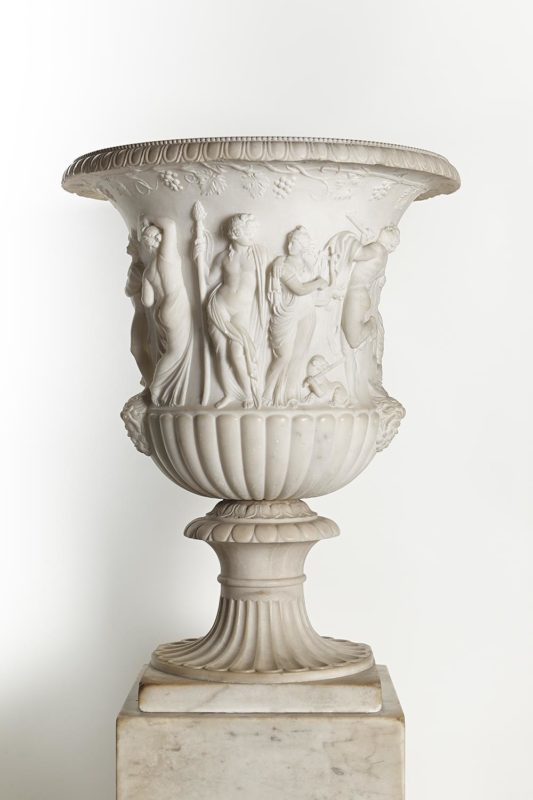
Conservation Efforts
Due to their prominent location in the Entrance Hall, both vases are unfortunately touched by visitors. Consequently, Vizcaya’s staff needs to carry out conservation treatments, cleaning them with cotton swabs and proprietary solutions to remove the buildup grime that results from touching. Watch the video below to learn more about the cleaning process and please be mindful not to touch collection objects during your visit to Vizcaya.
This project has been made possible in part by a major grant from the National Endowment for the Humanities: Democracy demands wisdom.
Any views, findings, conclusions, or recommendations expressed in here, do not necessarily represent those of the National Endowment for the Humanities.


